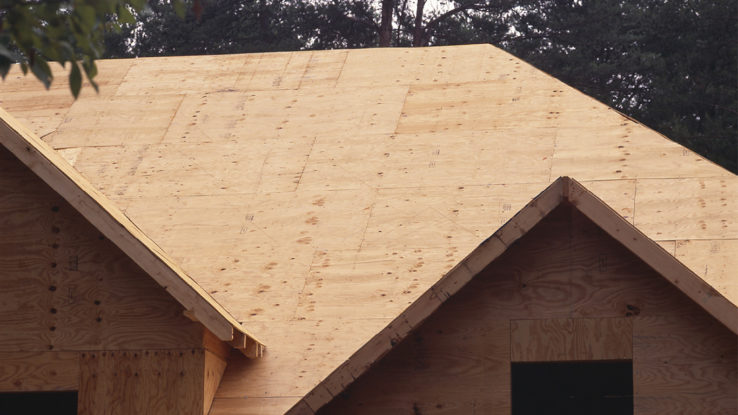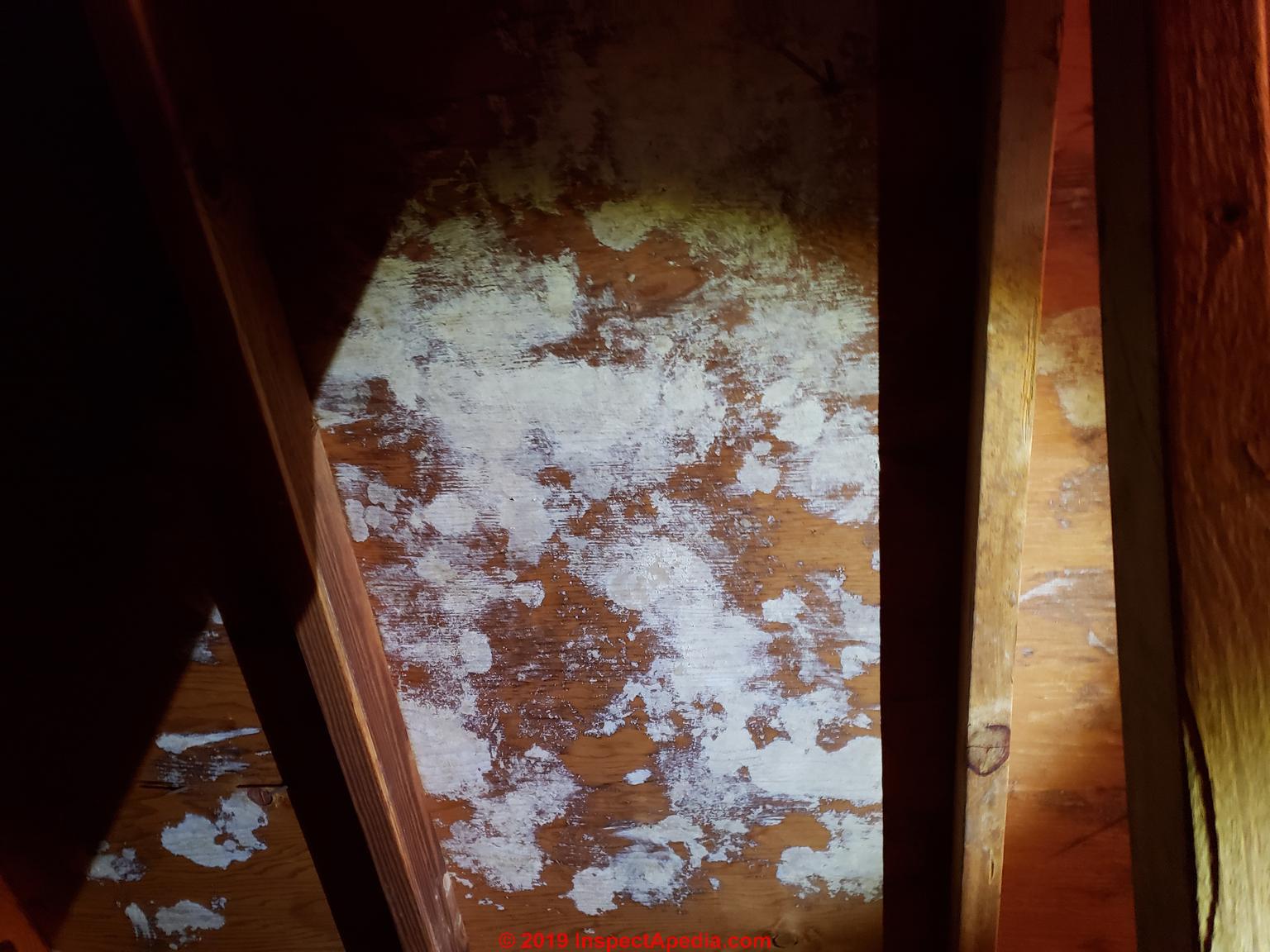Moldy Plywood Under New Roof

To prevent future mold growth remove the source of moisture causing it.
Moldy plywood under new roof. Damaged roof sheathing that may need replacement now or when re roofing moldy roof sheathing an unlikely but not impossible source of airborne problematic allergenic or other mold in the occupied space mold contaminated insulation inadequate blocked or improper under roof ventilation. If there is a leak in the roof plumbing or windows the mold will reappear if the water is. Wait 10 minutes scrub the area and repeat the process two more times. This article offers advice on cleaning mold found on surfaces of un finished wooden building materials such as framing lumber rafters floor joists wall studs and building roof wall and floor sheathing such as plywood tongue and groove pine boards and other structural wood surfaces in buildings.
In the vast majority of cases the mold growth is caused by condensation. Treat exposed molded subflooring with a mixture of 1 cup of borax and 1 gallon of water or an epa registered mold removal product. Mold on the underside of roof sheathing is also very common. Best procedures for cleaning mold contaminated wood.
Mold usually grows due to excess moisture in the area either in the air or on a surface. Metal roofing panels rated for architectural use attached to purlins horizontal pieces of wood or metal fastened to roofing trusses are structurally sound when installed according to your roofing manufacturer s instructions and local building codes. Move any un moldy plywood boards to a new storage area or remove the cause of the mold to prevent mold from growing on other boards. Roofs are framed with rafters or trusses which are rafters joined by internal braces so they install as a single component.
You can also soak affected subflooring with a brush broom. Mold that grows on the underside of roof sheathing due to ideal mold growth conditions being present. The minimum plywood for roofing. For many applications a layer of plywood underneath your metal roofing is an unnecessary expense.
Treat the molded plywood. The presence of mold in your attic is often the result of poor ventilation insufficient insulation moisture from a roof leak or improper venting from your bathrooms or kitchen. Easily kill mold with a vinegar spray. Prevent future mold growth.
This occurs when the temperature of the sheathing drops below the dew point creating a thin layer of moisture on the substrate.













































